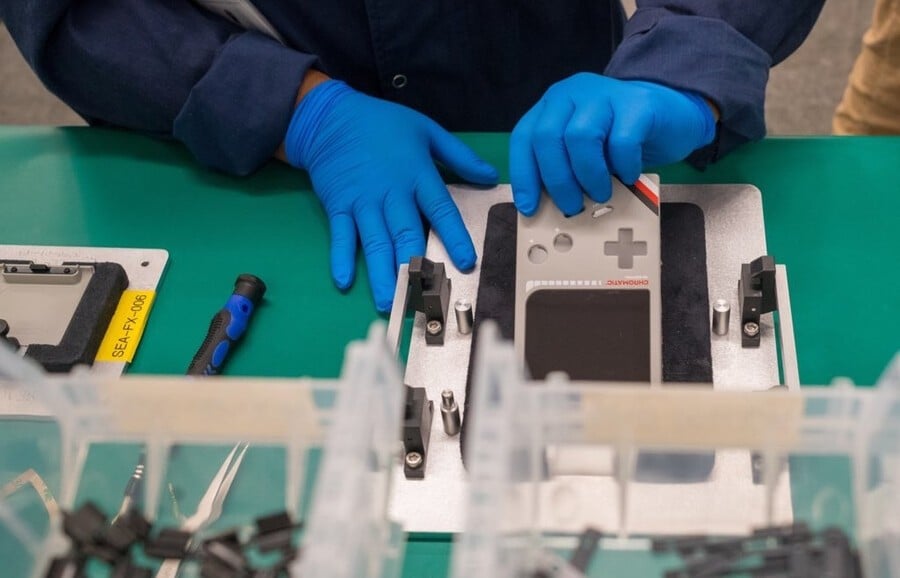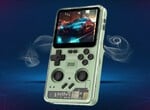
It's fair to say that the recent announcement of the ModRetro Chromatic caused quite a stir.
It's a brand-new FPGA replica of the Game Boy that not only runs all Game Boy and Game Boy Color software but also boasts a custom display which replicates the look of the original in painstaking detail.
The launch is coming this Christmas, with units costing $200 / £160. Keen to learn more about what makes Chromatic so special, we were fortunate enough to speak with ModRetro CEO and Engineer Torin Herndon.
What makes the Game Boy such a special system that we're still seeing new variants decades after it launched?
I think people (including myself) long for an era where casual handheld gaming wasn't dominated by phones. In the Game Boy era, games were casual due to the lean nature of the hardware platform, so the content and the device mirrored each other. The player made up for the leanness by bringing their own imagination to the table. Many casual games today are more passive consumption experiences tailored around greasing the next incremental transaction.
I keep my Chromatic on my nightstand with a few classic games like Pokémon and Chromatic Tetris and use it to wind down. Modern systems just can't access the same level of comforting, simplified gameplay that the Game Boy can, which is why we went to so much trouble to try to recreate this experience, even down to stripping away high resolution.
With its metal casing and super-tough screen, this is clearly going to be a premium product. How much development work has gone into creating the Chromatic from a physical perspective?
An unbelievable amount considering the team size. Every single element is fully custom. The LCD is custom down to the TFT level. The speaker module, thixomolded shell, PBT buttons, membranes, batteries, etc, are all designed from scratch. We worked tirelessly to develop a supply chain that allows us to introduce these elements while retaining an accessible price point.

Did you develop the FPGA core in-house? Were there any challenges in its development?
Many challenges. We will be extending and contributing to the existing open-source projects with our implementation.
Given that the market already has an FPGA Game Boy option in the shape of the Analogue Pocket, why did you choose to take on this project? How will the Chromatic differ from the Pocket?
We felt that a device needed to exist that perfectly recreated the original artwork of this game library, and nobody (for a good reason) would ever attempt to develop an LCD from scratch when you can adapt existing off-the-shelf displays and digitally upscale or crop your images.
Original Game Boy colour art took advantage of line drawing at the subpixel level, which means there is simply no way around resolution accuracy being meaningful to preserve these formats. This display is the heart of the difference between Chromatic and Pocket, but the philosophy that led to this display extends through all decisions on Chromatic.
Since we are dedicated to Game Boy and Game Boy Color formats, we have no need for extraneous buttons on the right hand or trigger buttons. No need for excessive device width because we were not limited to off-the-shelf displays. We insisted on the need for compatibility with a universal battery standard (AA) as well as a custom snap-in lithium pack. Non-serviceable lithium packs are shortcuts in consumer electronics. We all know they have very limited lifespans, we know they drive planned obsolescence, and yet we accept them for the sake of cost and convenience. Meanwhile, you can pick up a 30-year-old Game Boy, put brand-new batteries in it, and experience the original battery life.
Overall, we made the product that gives you the most surreal feeling of experiencing the era, which is also why we are attracting original developers to remaster or re-release their games on Chromatic.
What was the reasoning behind leaving GBA out of the equation?
GBA formats deserve their own dedicated landscape device as much as GBC formats deserve Chromatic and its 160x144 pixel display. Nobody wants to awkwardly hit trigger buttons on the backside of a portrait handheld. Form factor and ergonomics matter. GBA had a 240x160 pixel resolution display, and that display needs to be made so the world can enjoy these games properly in perpetuity.
The fact that the Chromatic comes with its own physical media format is impressive. Do these carts leverage any special hardware features, or will they also be compatible with standard Game Boy hardware?
They are compatible with Game Boy hardware. These carts use FRAM and other long-life memory components, leading to a battery-less design that lasts decades, just like your old Game Boy cartridges did (minus having to solder in new batteries). We need to produce this physical format to ensure the best shot at re-releasing classic games and creating new games, with the developers, both old and new, being paid for their work.
It's amazing to think that this device will be launching with an official version of Tetris, just like the original Game Boy did back in 1989. Can you tell us a little about what makes Chromatic Tetris so special? Was it developed in-house, and did you have any input from Alexey Pajitnov?
It was fully developed in-house, but we worked closely with The Tetris Company to ensure strict adherence to the Tetris brand and guidelines.

Chromatic Tetris was developed from the outset with the goal of being a new competitive handheld Tetris, and we committed to appearing at the Classic Tetris World Championships before we even had a prototype Chromatic! This Tetris was being play tested by the best Tetris players in the world during development, and therefore has special gameplay options that blend classic competition modes together with modern gameplay.
Because Chromatic streams video out over USB, it's especially well tailored to competition. I believe Chromatic Tetris will be quite notable looking back on the history of Tetris several decades from now, and at every level, we tried to give Tetris the respect it deserves as the most recognizable game in human history.
Does ModRetro have any plans to create FPGA reproductions of any other handhelds or home hardware?
Yes.
Thanks to Torin Herndon for taking the time to speak with us. The ModRetro Chromatic launches this Christmas and costs $200 / £160.




